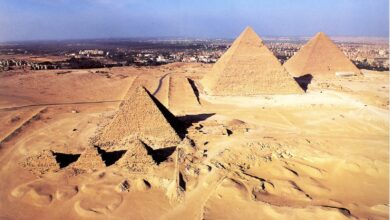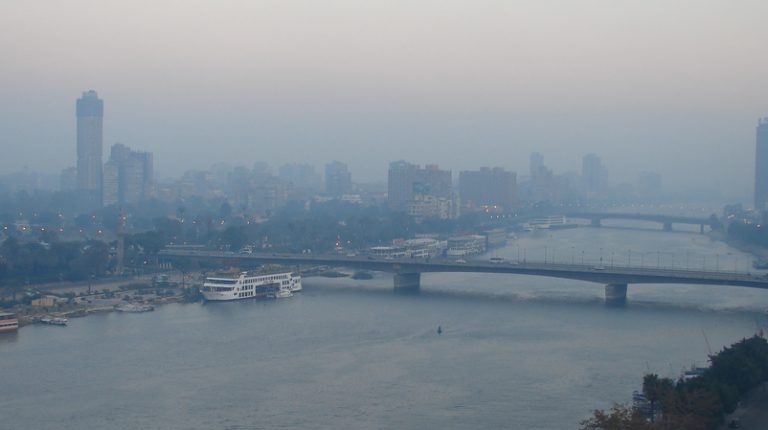Whenever anyone refers to green architecture, spectacular and space age buildings come to mind: Twelve West in Portland with urban wind turbines installed right on site, selected among the top ten green projects of 2010 by the American Institute of Architects, or the project of Masdar city in Abu Dhabi.
It would seem that this extreme architecture cannot be replicated in Egypt, at least for the time being. Although less spectacular, the concept of green architecture is taking its first steps in Egypt, due to the necessity of building structures according to environmentally responsible and resource-efficient processes.
Ahmed Rashed, Professor of Architectural Engineering at the British University in Egypt, clarifies that green architecture is at an experimental phase in Egypt and that the projects developed so far cannot be properly defined as green architecture, but rather as sustainable buildings, which can be implemented locally, with an emphasis in reducing environmental impact and improving long-term economic performance.
Any building has to fulfill specific criteria in order to be defined as green. Leadership in Energy and Environmental Design (LEED) is a green building certification system that is internationally recognized and certifies that a building or community was designed and built using sustainable techniques to improve performance in energy savings, water efficiency, CO2 emissions reduction, and indoor environmental quality.
Although each country has its own criteria due to its particular ecological, industrial and social challenges, Egypt in 2009 developed the so-called “green pyramid,” which denotes seven key components of sustainability; they include design process and recycling of solid waste.
Egypt must deal with its unique geographical and demographical problems to achieve the realization of green projects. Nowadays, the Egyptian population is crammed into five percent of the country. Areas along the Nile Valley and the Delta are populated, while the rest is empty desert. Projected population growth hastens scientists to provide solutions.
“It's estimated that Egypt will reach between 150 and 180 million inhabitants by 2050,” Rashed explained, while proposing three long-term scenarios for where those people will go. “The Sinai Peninsula and the Eastern Desert can accommodate 5 and 20 million people respectively, while the Western Desert is the most appropriate location for hosting the remainder.” According to the expert, Egypt stands at a crossroads since the five percent of the valley is overpopulated and cannot provide a sustainable solution without Egyptian communities expanding into empty desert.
“At this crucial juncture, we cannot just think about a single construction or project, but we need to ‘build’ a new citizen who is conscious of his duties and responsibilities towards the environment and the community.”
Putting theory into practice, Rashed is currently working on a new proposal, which is still in its embryonic stage, called “The City of January 25,” a tribute to Egypt’s recent uprising.
“The pilot project, which could be the beginning of a new venture in Egypt, aims at building a new political capital. The city is a national project that will develop and urbanize the desert,” Rashed says.
He intends to create the new capital at least 300 km away from Cairo, and provide a fast connection to the valley through roads and trains. According to the expert, “this distance will allow for stability and won’t encroach on the Nile Valley, so the City of January 25 won’t be an additional burden to the five percent as is the case with 6th of October City and 10th of Ramadan City and others.”
Green cities may represent an answer to overpopulation. Nevertheless, sustainable architecture also deals with existing buildings that need to be adapted to new parameters of sustainability.
Florentine Visser, an expert in low energy building and urban planning at MED-ENEC (Energy Efficiency in the Construction Sector in the Mediterranean), stresses the importance of sustainable development of the already-built-up environment, whether in the five percent or in desert areas. She considers the second option more costly and difficult to achieve due to the absence of infrastructure.
“The most important aspect is to plan new areas in an integrated way, so that all services needed by the people could be at a reasonable distance, to minimize the need for transportation,” she says.
According to Visser, impressive buildings, with or without a green grading system, can attract attention to the issue of sustainability. However, “this is not the normal market; people have really to re-consider their behavior and their every day practices in order to reach a sustainable and green system,” she says.
Adapting existing building and reducing their energy consumption can be very easy. Shading devices, double glazing, roof insulation, the use of solar hot water instead of an electric boiler, and the use of efficient light bulbs and appliances can contribute to saving energy.
Everyday actions that promote sustainability include turning off lights and appliances when not in use, using water efficiently, and recycling waste. Finally, plants and trees can be used to create pleasant outdoor spaces and shade on buildings.
MED-ENEC is a European funded project focusing on energy efficiency in the building sector in nine North African and Middle Eastern countries. From 2006 to 2009, MED-ENEC supported ten low-energy-buildings as pilot projects, and six received the "National Energy Globe Award.”
In Egypt, the EU-funded initiative supported an administrative building in Sharm el-Sheikh.
“This pilot project included low-tech techniques, which are suitable for residential buildings and small scale office buildings, such as shading devices, leakage prevention, thermal insulation and efficient lights, and a high-tech solution, which is only feasible for high building market, namely the solar chiller. These energy saving solutions provided a reduction of almost 50 percent of primary energy consumption,” Visser explains.
Another 5-year-old pilot project for the development of green houses was realized in Upper Egypt's Minya Governorate. As Laila Iskander, a community development practitioner and chairperson of CID consulting explained, “18 adobe constructions were restored. [The constructions] prevent humidity using special sealers and local materials, and we taught local people how to prepare lime and preserve their heritage.”
According to scientists, sustainable buildings and cities are becoming realizable in Egypt. However, as many experts point out, green and sustainable architecture is achievable only if individuals change their attitudes toward the environment.




